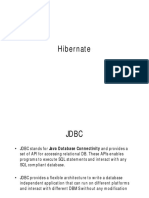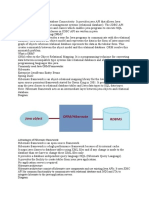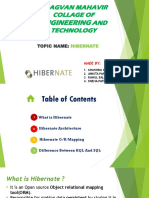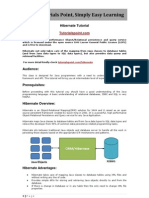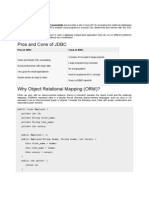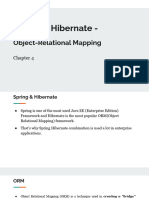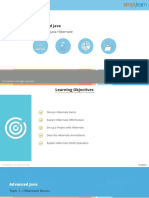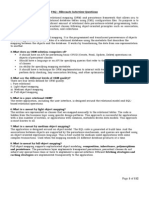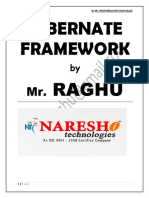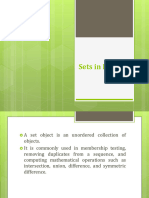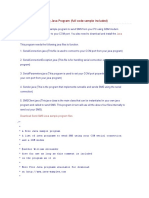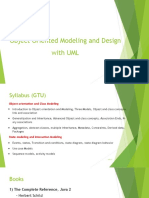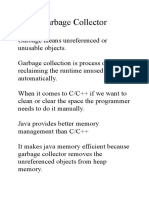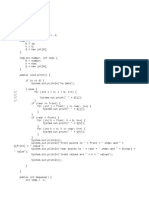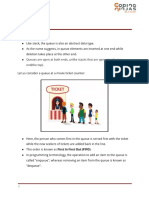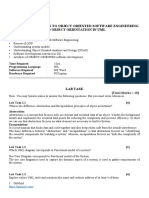0% found this document useful (0 votes)
11 views46 pagesHibernate 1
The document provides an overview of Hibernate, an open-source framework for Object-Relational Mapping (ORM) in Java, detailing its advantages over JDBC, which allows for database-independent applications. It explains Hibernate's architecture, including key components like Configuration, SessionFactory, Session, and Transaction objects, as well as the use of annotations for mapping Java classes to database tables. Additionally, it covers Hibernate Query Language (HQL) and provides examples of configuration and usage in Java applications.
Uploaded by
nimarjotkCopyright
© © All Rights Reserved
We take content rights seriously. If you suspect this is your content, claim it here.
Available Formats
Download as PPTX, PDF, TXT or read online on Scribd
0% found this document useful (0 votes)
11 views46 pagesHibernate 1
The document provides an overview of Hibernate, an open-source framework for Object-Relational Mapping (ORM) in Java, detailing its advantages over JDBC, which allows for database-independent applications. It explains Hibernate's architecture, including key components like Configuration, SessionFactory, Session, and Transaction objects, as well as the use of annotations for mapping Java classes to database tables. Additionally, it covers Hibernate Query Language (HQL) and provides examples of configuration and usage in Java applications.
Uploaded by
nimarjotkCopyright
© © All Rights Reserved
We take content rights seriously. If you suspect this is your content, claim it here.
Available Formats
Download as PPTX, PDF, TXT or read online on Scribd
/ 46

